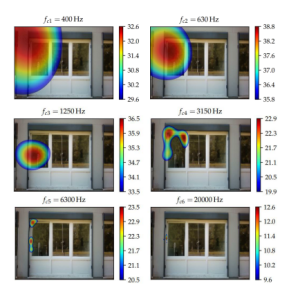Feedback from the 41st AIVC – ASHRAE IAQ joint Conference – Summary of the topical sessions on airtightness
The 41st AIVC – ASHRAE IAQ joint Conference, co-organized by ASHRAE & AIVC, was held on 4-6 May 2022 in Athens. The event drew 185 participants (in person and remotely) – academic researchers, engineering and consulting firms, industry representatives, people involved in standardisation, policy makers, manufacturers & stakeholders and international organizations.
During the event, two topical sessions dedicated to building and ductwork airtightness were organized.
The session “Impact of Building and Ductwork Airtightness on Indoor Environmental Quality (IEQ): What Do We Know, What Do We Need?”, aimed at discussing the impact of building and ductwork airtightness on IEQ. The objective of this session was to discuss the research needed in the field of building and ductwork airtightness and have a better view on their impact IEQ.
The first part of this session focused on ductwork airtightness. After a brief introduction by Valérie Leprince (INIVE) stressing the need for studies on this topic, Paul Francisco (University of Illinois and Colorado, USA) presented a study focusing on radon showing that the ratio of first floor-to-foundation radon levels rises as outdoor temperatures decrease. This implies greater mixing as the forced-air system runtime increases, which could only be due to some combination of duct and house leakage. Mark Modera (UC Davis, USA) then described how duct leakage can impact IEQ in different situations. These impacts range from direct pollutant entry through return duct leakage in single family residences, to impacts of supply duct leakage on building pressures, to zone-exhaust flow reductions due to duct leakage.
The second part of the session focused on building airtightness. After a brief introduction by Iain Walker (LBNL, USA), Gaëlle Guyot (Cerema, France) discussed the impact of multizone airleakage on ventilation performance and indoor air quality in low-energy homes. It concluded that it is relevant to use detailed data on envelope and internal partition wall air leakage distribution to precisely assess ventilation performance on Indoor Air Quality (IAQ). Mark Modera (UC Davis, USA) completed the session with a presentation on the impacts of leakage on inter-apartment pollutant transport.
The session “Better Quantifying and Locating Building Leakages” dealt with the location and quantification of building air leakages. Air infiltration has multiple consequences on energy use and IEQ that depend on the location and distribution of leakage. Among others, pollutant infiltration and air draft are highly impacted by leakage distribution. In current practice, leakage detection is often performed together with airtightness tests. However, a recent study (Moujalled et al., 2019) showed that the airtightness level was not correlated with the number of leaks detected through visual assessment. This stresses the need for methods quantifying leakage through building components. In addition, such methods would help contractors to assess the quality of on-site execution, that is known as having a major impact on building airtightness. Therefore, the objective of this session was to present and discuss new methods to quantify building leakages. Three presentations were given.
Sylvain Berthault (CEREMA, France) presented a system developed to measure the airtightness of windows installed on site. The system can measure leakage through windows whose height and width lie between 0,7 and 2,2m, and 0,7 and 1,10m respectively. This device has been used in the context of the Durabilit’air project, 5 windows have been tested 3 times each in a period of 3 years to evaluate the durability of their airtightness. Measurements have shown very little evolution of the windows airtightness over the 3-year period.
Benedikt Kölsch (DLR, Germany) presented the detection and quantification of leakage using microphone arrays. Acoustic methods allow to quantify single leaks without the need for pressure or temperature differences. The acoustic image obtained enables the visualization of primary sound sources coming through the building envelope and, therefore, the detection of leaks. Experiments were conducted using white noise with an analysed frequency range of 0.25-40kHz. It has shown that the size of the leak can be estimated by varying the frequency range: large leaks are those transmitting the most sound at small frequency, while small leaks are those transmitting the most sound at high frequency.

Figure 1: Acoustic Images (Benedikt Kölsch et al. 2022, “Detection of Air Leakage in Building Envelopes using Microphone Arrays”, 41st AIVC – ASHRAE IAQ – 9th TightVent/ 7th venticool joint Conference, Athens Greece, 2022)
Mark Modera (University Davis, USA) discussed the feasibility of using continuous short-term pressure measurements to determine building envelope leakage with MEMS sensor networks. The idea is to combine one-time measurements of outdoor air intake flows to HVAC equipment, with continuous pressure measurements over time periods of one day to one week. The idea is to avoid disrupting business operations, or testing in the evening, with a fan-pressurization door. Laboratory measurements and field test results associated with using both differential and absolute pressure transducers were presented.
